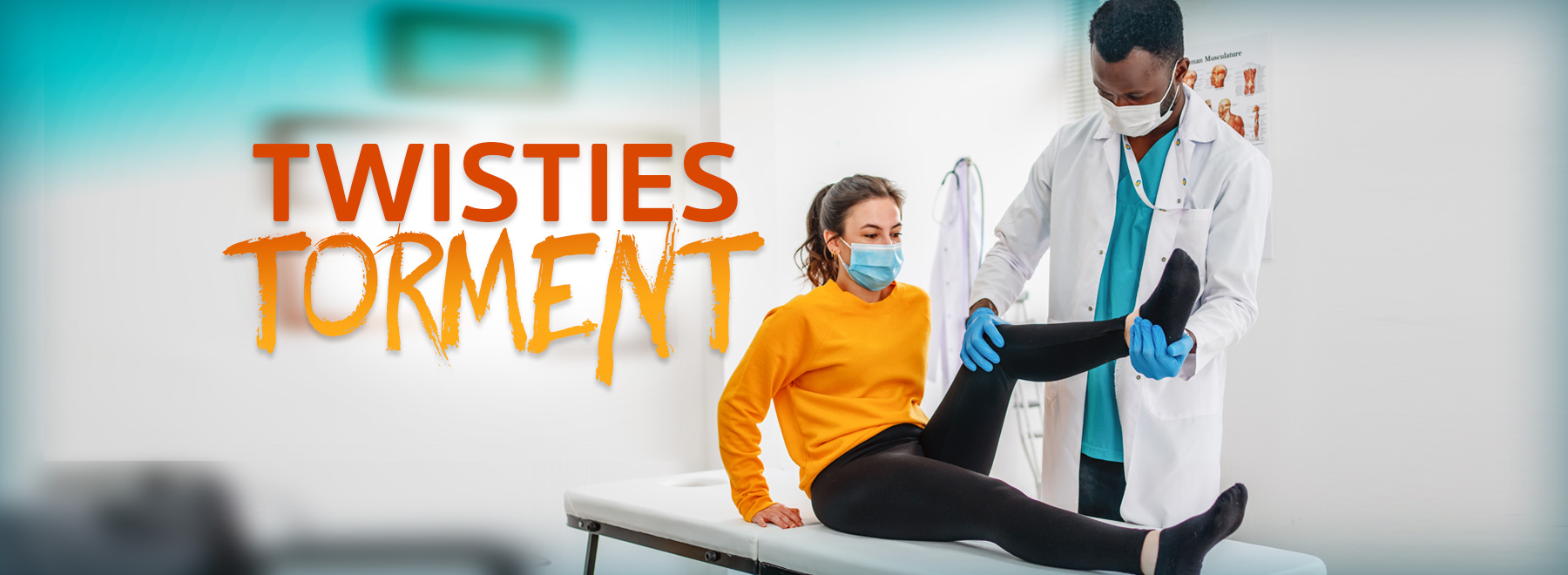Crisis of self-confidence – a matter of body and mind – can stifle athletes, anybody
You don’t have to be Olympian gymnast Simone Biles to be stalked by the twisties, or something just as sinister.
In other sports and settings, the twisties’ relatives include the bendies, the yips, the waggles and the jerks: the inability to control your arms or legs or, in a way, your brain.
But you don’t have to be standing on a balance beam or about to ricochet skyward from a mat on the floor to experience the sudden inability to perform a familiar movement or memory task that you hardly had to think about before.
This condition, caused by either psychological or neurological factors, or both, can strike on a base path, on a bandstand, behind a podium or in boardroom.

“With any movement, we develop our ways of doing things,” said Dr. Michael Brown, assistant professor of physical therapy at the University of Mississippi Medical Center.
“Incredibly talented athletes have developed a movement pattern that makes them very successful at what they do. But we all are training neuro-motor patterns,” said Brown, a certified clinical specialist in sports physical therapy. “Our brain is telling our muscles and bodies what to do.
“The more we do that, the less we have to think about it. But something can interrupt the relationship between your brain and the rest of your body.”
That relationship is also called muscle memory: “The idea is that neurons that fire together wire together,” said Dr. Josie Nicholson, a counseling and sports psychologist at the University of Mississippi and a certified mental performance consultant.
“That’s how we form habits and skills; we do things over and over, so that the same neuro-pathways fire until they wire together.
“With a gymnast, such as Simone Biles, when there is so much pressure, so much expectation, this can create a lot of tension and stress.”
Pressure, of course, is something we all face and something we may all surrender to, Nicholson said. “For example, you may have to introduce yourself in front of 250 people, and all of sudden you have forgotten your title, how long you have worked at your job, maybe your name, because of the stress and anxiety you feel speaking in front of a crowd.
“You may be in sales and are asked to give a presentation. And then you find that when you try to say or spell a word it just doesn’t seem right. Imagine that you’re scared by that thought, and that it becomes a cycle. Suddenly, you, the person who is accustomed to bringing in the big sales, is thinking, ‘I cannot give this pitch tomorrow.’”
Gymnasts, football players, golfers, Major League baseball stars – Rick Ankiel and Steve Blass come to mind – and other high-performance athletes experience the same kind of emotions, but perhaps in arenas which are more physically menacing.
“If I try to do a cartwheel and fall, that’s one thing,” Nicholson said. “If Simone Biles falls during one of her routines – good grief.”
As Brown puts it: “Hers is such a high-risk movement. If she loses her way, then she may have a cervical spine injury. There’s even a big difference between gymnastics and some other sports. If golfers can’t complete their movements, the ball may fly where they don’t want it to, but they can’t break their neck.”
At the Tokyo Olympics earlier this summer, Biles had difficulty with her dismounts from the uneven bars and her landings off the vault.
“There’s no telling how many times she had completed her routines,” Brown said, “It had been so repetitive, she didn’t really have to think about it before.
“But, because of fear, or whatever else, she was now trying to think about it, rather than just doing it. The thought process may be: ‘I don’t feel safe in completing a movement, because I don’t know where I’m going to land.’”
Blame the imagination.
“We create images in our minds,” Nicholson said. “Our brain thinks in images. So, for example, if I said to you, ‘Don’t jump in the lake,’ you just pulled up an image in your mind of yourself jumping in the lake.”
Negative imagery, a mental picture of failing, say – landing on your neck, throwing a wild pitch, missing a one-foot putt, forgetting your own name – takes over. It could take over after just one actual, poor performance.
“It can create the twisties, the yips,” Nicholson said. “It’s a self-fulfilling prophecy, a feedback loop. You fear having that experience again.
“With an athlete like Simone Biles, added stress and expectation interfere with what her body can do without her thinking about it. But I don’t believe the stress got so intense that she couldn’t handle it; instead, she may have realized there is a danger to performing at that level.
“The other piece is that she is on a gold medal team. She had more desire for her team to do well than for her to make an individual statement. I believe it showed a lot of courage to say, ‘I’m not 100 percent.’ She probably could have medaled at 60 percent. But it may not have been safe, and it wouldn’t have been good for the team.
“It wasn’t worth her team’s chances and her safety.”
The level of stress does not depend on the supposed loftiness of the stage, though. “Your stakes are as high as your own world,” Nicholson said.
“Someone else’s stakes may be tied to SEC football; but for you, the pressure is just the same if, for instance, you’re trying to meet the expectations of your family.
“This happens often with an athlete who excels early. At some point people may stop talking about who she is and instead talk about who she’s going to be: ‘Oh, my gosh, you’re going to play in college. I know you’re going to be a superstar.’
“But those other athletes in college were the best in their sport where they came from, too; so now, when she goes out and competes, she’s putting her entire identity on the line: ‘I don’t know who I am other than a soccer player. If I fail, it’s not that I fail just at soccer; it’s: I am a failure.’
“Imagine going out there and your entire identity is tied to failing at something.”
So what can you do to come back from these bouts of self-doubt?
Let’s talk first of the physical realm, Brown’s specialty. For athletes, Brown said, “you break down the components of the familiar movements in the sport and retrain.
“For a gymnast like Simone Biles, you would let her start out with a movement that is safer, something that is less susceptible to injury, then proceed from the very simple to increasingly complex movements.
“Then she becomes not as fearful because she is completing movements she can be successful at.”
For soccer players who suddenly find they can’t shoot or kick as powerfully as before, or who find themselves falling down on the field during critical moments, Brown would ask them to start out by balancing on one leg.
“Next, balance on one leg and kick the ball with the other one,” he said. “Then balance, swing a leg and hit the ball at the same time.”
Finally, the player should be able to successfully complete these movements while running, that is, to reach the goal – in every sense of that word.
As for the mental realm, Nicholson’s long suit, let’s return to her image of jumping in the lake – a figure of speech that may translate, for an athlete, into shanking a putt, throwing wild to first, falling off the beam.
“Instead of thinking about not jumping in the lake, which is difficult,” Nicholson said, “I ask them to think about standing on the pier.
“Treatment involves a lot of what is called physiological arousal training, being able to pair the image of what you want to do with a relaxed state of mind. It means a lot of work with imagery, a lot of self-management.”
It means she said, a lot of identity exploration and formation – deciding what you want out of life and work and more.
“It’s coming to understand that you are more than just an athlete.” That whatever happened to make you fear that uncontrollable jump in the lake was an event. “And just an event,” Nicholson said, “and not your identity.”
For some, hypnosis may help, she said. The idea is that “the unconscious mind knows what’s best for you and knows what’s really going on,” she said. “[Hypnosis] allows you to get to a place where you can access that part of your mind.”
As for certain medications, “a beta-blocker could be helpful,” she said. “But I believe that’s just a temporary fix.”
Finding the path to a permanent fix may depend on the athlete, the person, seeking that path.
“The time it takes to recover is unique to every athlete,” Nicholson said. “Progress can happen very quickly; it may be a day. It could be that the athlete just had one day when they were completely off.
“Again, those who tend to bounce back quickly recognize that day as a one-off and don’t become afraid of it happening again.”
The above article appears in CONSULT, UMMC’s monthly e-newsletter sharing news about cutting-edge clinical and health science education advances and innovative biomedical research at the Medical Center and giving you tips and suggestions on how you and the people you love can live a healthier life. Click here and enter your email address to receive CONSULT free of charge. You may cancel at any time.



